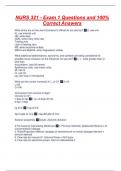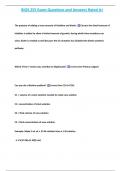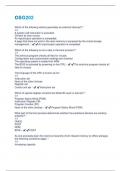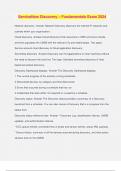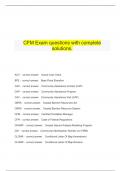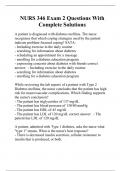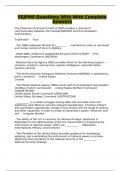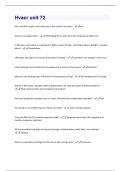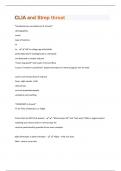Exam (elaborations)
NURS 321 - Exam 1 Questions and 100% Correct Answers
- Course
- Institution
What terms are on the Joint Comission's official do not use list? U, use unit IU, use internal unit QD, write daily QOD, write every other day Trailing zero Lack of leading zero MS, write morphine sulfate MSO4 and MgSO4, write magnesium sulfate What additional abbreviations, acronyms, and symbols ...
[Show more]
